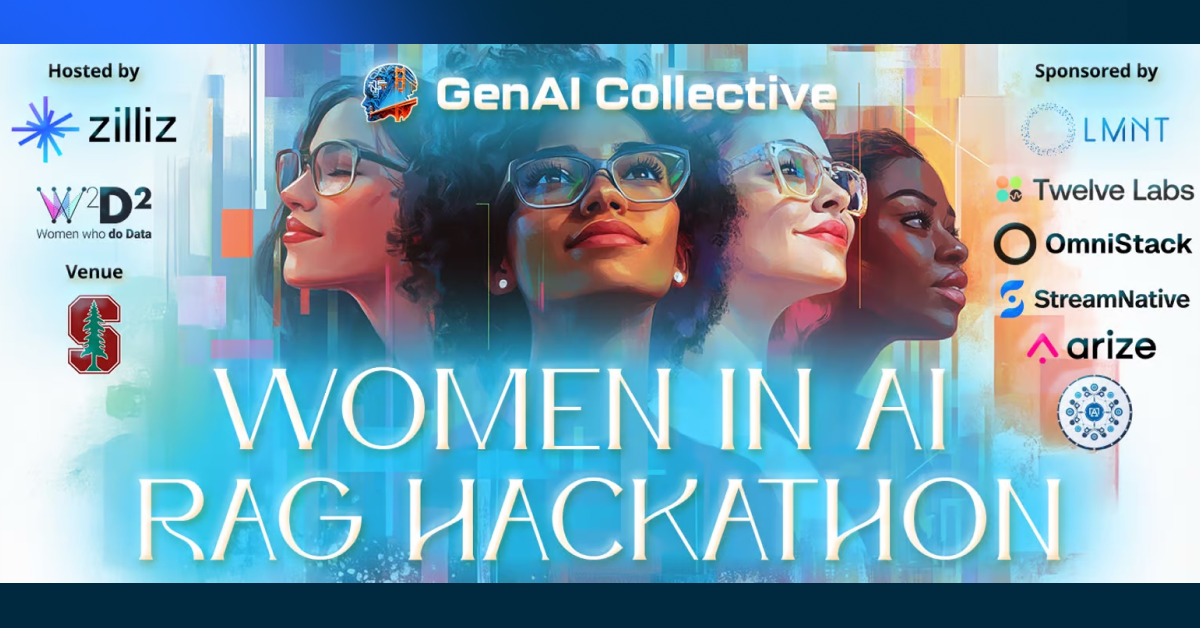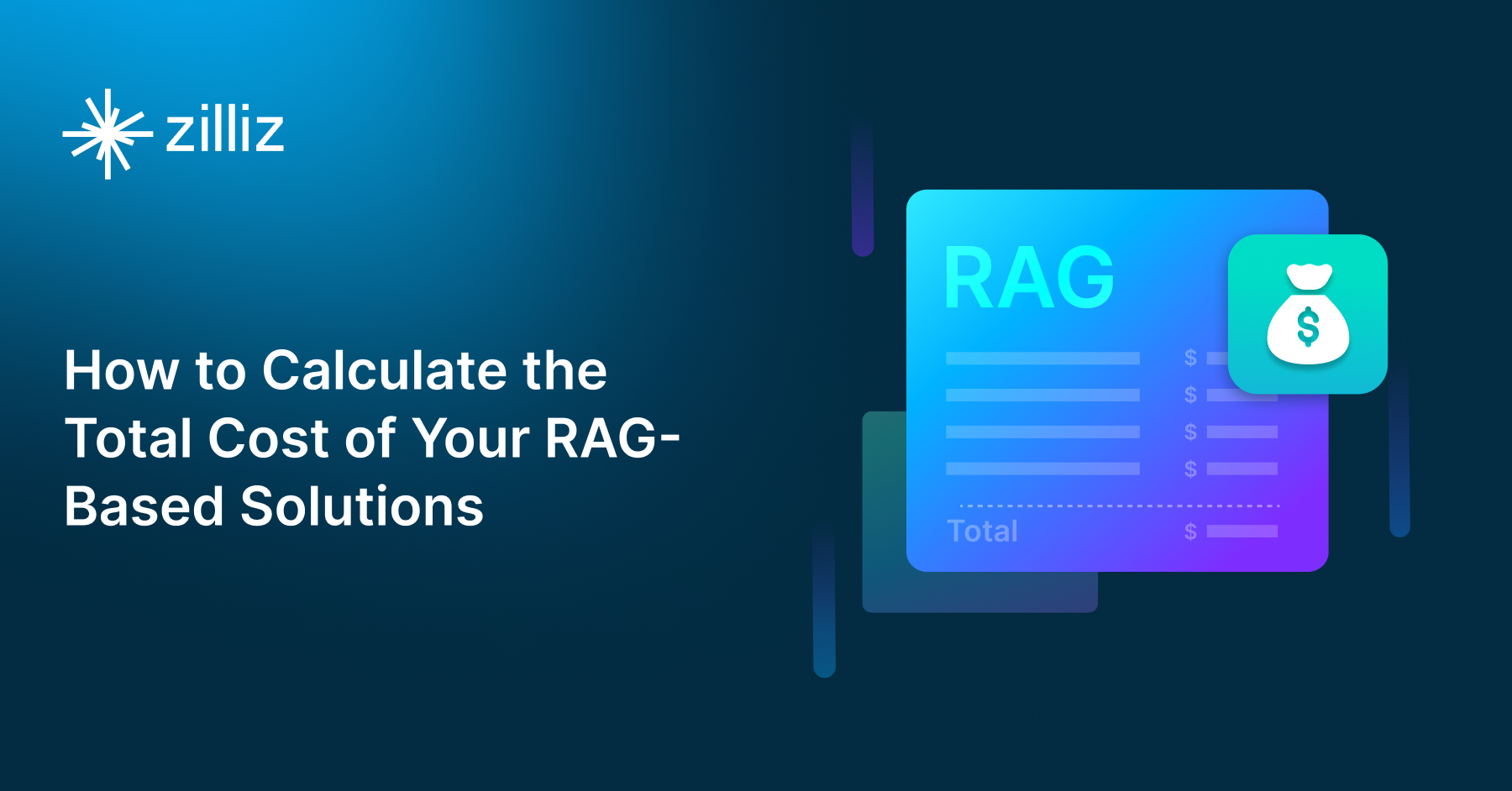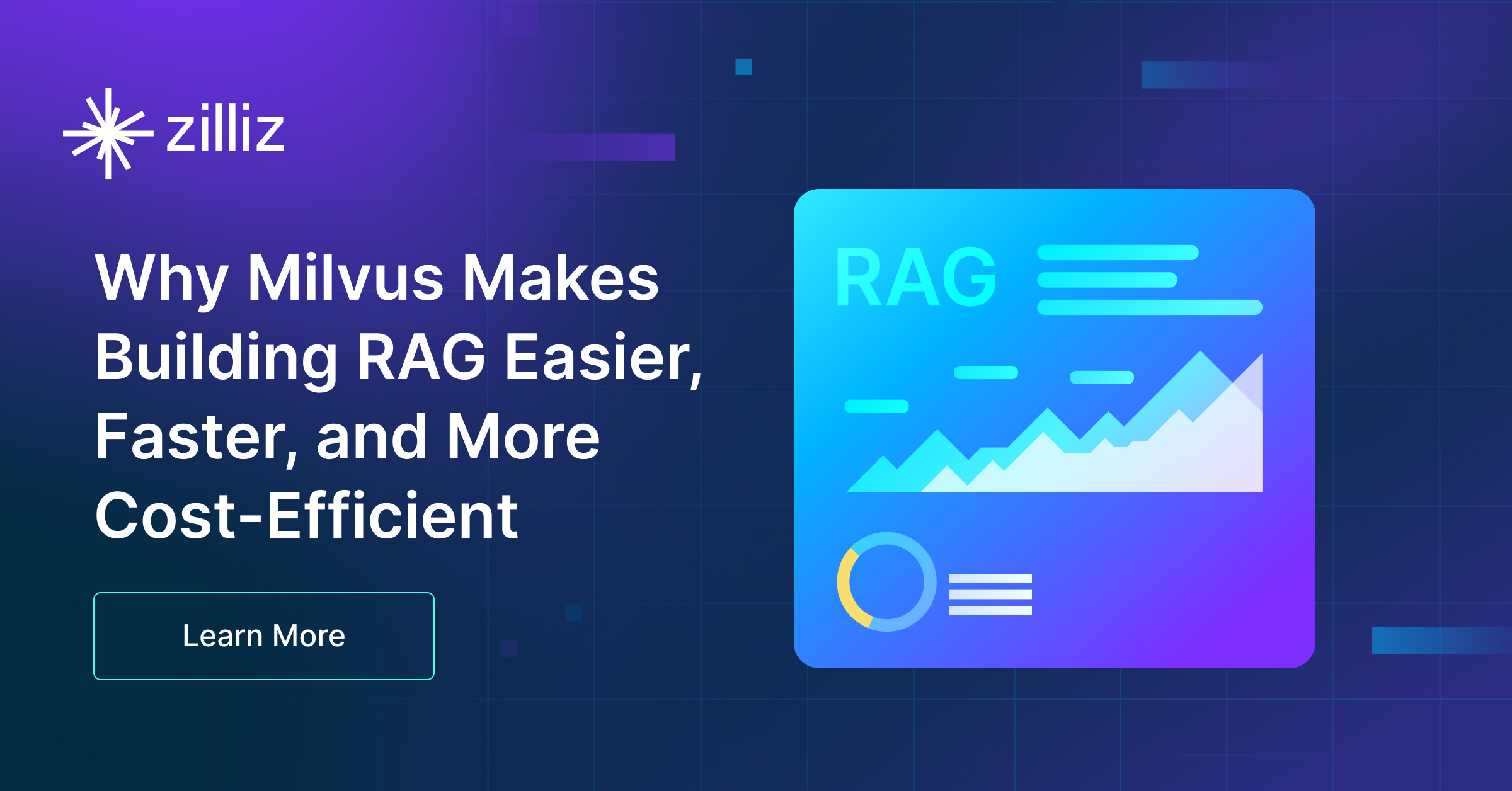Build RAG Chatbot with LangChain, Zilliz Cloud, Mistral AI Mistral 7B, and IBM slate-125m-english-rtrvr-v2
Introduction to RAG
Retrieval-Augmented Generation (RAG) is a game-changer for GenAI applications, especially in conversational AI. It combines the power of pre-trained large language models (LLMs) like OpenAI’s GPT with external knowledge sources stored in vector databases such as Milvus and Zilliz Cloud, allowing for more accurate, contextually relevant, and up-to-date response generation. A RAG pipeline usually consists of four basic components: a vector database, an embedding model, an LLM, and a framework.
Key Components We'll Use for This RAG Chatbot
This tutorial shows you how to build a simple RAG chatbot in Python using the following components:
- LangChain: An open-source framework that helps you orchestrate the interaction between LLMs, vector stores, embedding models, etc, making it easier to integrate a RAG pipeline.
- Zilliz Cloud: a fully managed vector database-as-a-service platform built on top of the open-source Milvus, designed to handle high-performance vector data processing at scale. It enables organizations to efficiently store, search, and analyze large volumes of unstructured data, such as text, images, or audio, by leveraging advanced vector search technology. It offers a free tier supporting up to 1 million vectors.
- Mistral AI's Mistral 7B: A highly efficient and powerful language model with 7 billion parameters. It is designed to offer robust performance for a wide range of natural language processing tasks, delivering high-quality responses while maintaining a balance between speed and computational resource usage. Its architecture is optimized for both flexibility and scalability in AI applications.
- IBM slate-125m-english-rtrvr-v2: This AI model is designed for natural language understanding and text retrieval tasks. Leveraging advanced training techniques, it excels at processing and retrieving relevant information from large datasets, making it ideal for applications in chatbots, customer support, and content recommendation systems. Its strength lies in its ability to comprehend context and deliver accurate responses efficiently.
By the end of this tutorial, you’ll have a functional chatbot capable of answering questions based on a custom knowledge base.
Note: Since we may use proprietary models in our tutorials, make sure you have the required API key beforehand.
Step 1: Install and Set Up LangChain
%pip install --quiet --upgrade langchain-text-splitters langchain-community langgraph
Step 2: Install and Set Up Mistral AI Mistral 7B
pip install -qU "langchain[mistralai]"
import getpass
import os
if not os.environ.get("MISTRAL_API_KEY"):
os.environ["MISTRAL_API_KEY"] = getpass.getpass("Enter API key for Mistral AI: ")
from langchain.chat_models import init_chat_model
llm = init_chat_model("open-mistral-7b", model_provider="mistralai")
Step 3: Install and Set Up IBM slate-125m-english-rtrvr-v2
pip install -qU langchain-ibm
import getpass
import os
if not os.environ.get("WATSONX_APIKEY"):
os.environ["WATSONX_APIKEY"] = getpass.getpass("Enter API key for IBM watsonx: ")
from langchain_ibm import WatsonxEmbeddings
embeddings = WatsonxEmbeddings(
model_id="ibm/slate-125m-english-rtrvr-v2",
url="https://us-south.ml.cloud.ibm.com",
project_id="<WATSONX PROJECT_ID>",
)
Step 4: Install and Set Up Zilliz Cloud
pip install -qU langchain-milvus
from langchain_milvus import Zilliz
vector_store = Zilliz(
embedding_function=embeddings,
connection_args={
"uri": ZILLIZ_CLOUD_URI,
"token": ZILLIZ_CLOUD_TOKEN,
},
)
Step 5: Build a RAG Chatbot
Now that you’ve set up all components, let’s start to build a simple chatbot. We’ll use the Milvus introduction doc as a private knowledge base. You can replace it with your own dataset to customize your RAG chatbot.
import bs4
from langchain import hub
from langchain_community.document_loaders import WebBaseLoader
from langchain_core.documents import Document
from langchain_text_splitters import RecursiveCharacterTextSplitter
from langgraph.graph import START, StateGraph
from typing_extensions import List, TypedDict
# Load and chunk contents of the blog
loader = WebBaseLoader(
web_paths=("https://milvus.io/docs/overview.md",),
bs_kwargs=dict(
parse_only=bs4.SoupStrainer(
class_=("doc-style doc-post-content")
)
),
)
docs = loader.load()
text_splitter = RecursiveCharacterTextSplitter(chunk_size=1000, chunk_overlap=200)
all_splits = text_splitter.split_documents(docs)
# Index chunks
_ = vector_store.add_documents(documents=all_splits)
# Define prompt for question-answering
prompt = hub.pull("rlm/rag-prompt")
# Define state for application
class State(TypedDict):
question: str
context: List[Document]
answer: str
# Define application steps
def retrieve(state: State):
retrieved_docs = vector_store.similarity_search(state["question"])
return {"context": retrieved_docs}
def generate(state: State):
docs_content = "\n\n".join(doc.page_content for doc in state["context"])
messages = prompt.invoke({"question": state["question"], "context": docs_content})
response = llm.invoke(messages)
return {"answer": response.content}
# Compile application and test
graph_builder = StateGraph(State).add_sequence([retrieve, generate])
graph_builder.add_edge(START, "retrieve")
graph = graph_builder.compile()
Test the Chatbot
Yeah! You've built your own chatbot. Let's ask the chatbot a question.
response = graph.invoke({"question": "What data types does Milvus support?"})
print(response["answer"])
Example Output
Milvus supports various data types including sparse vectors, binary vectors, JSON, and arrays. Additionally, it handles common numerical and character types, making it versatile for different data modeling needs. This allows users to manage unstructured or multi-modal data efficiently.
Optimization Tips
As you build your RAG system, optimization is key to ensuring peak performance and efficiency. While setting up the components is an essential first step, fine-tuning each one will help you create a solution that works even better and scales seamlessly. In this section, we’ll share some practical tips for optimizing all these components, giving you the edge to build smarter, faster, and more responsive RAG applications.
LangChain optimization tips
To optimize LangChain, focus on minimizing redundant operations in your workflow by structuring your chains and agents efficiently. Use caching to avoid repeated computations, speeding up your system, and experiment with modular design to ensure that components like models or databases can be easily swapped out. This will provide both flexibility and efficiency, allowing you to quickly scale your system without unnecessary delays or complications.
Zilliz Cloud optimization tips
Optimizing Zilliz Cloud for a RAG system involves efficient index selection, query tuning, and resource management. Use Hierarchical Navigable Small World (HNSW) indexing for high-speed, approximate nearest neighbor search while balancing recall and efficiency. Fine-tune ef_construction and M parameters based on your dataset size and query workload to optimize search accuracy and latency. Enable dynamic scaling to handle fluctuating workloads efficiently, ensuring smooth performance under varying query loads. Implement data partitioning to improve retrieval speed by grouping related data, reducing unnecessary comparisons. Regularly update and optimize embeddings to keep results relevant, particularly when dealing with evolving datasets. Use hybrid search techniques, such as combining vector and keyword search, to improve response quality. Monitor system metrics in Zilliz Cloud’s dashboard and adjust configurations accordingly to maintain low-latency, high-throughput performance.
Mistral AI Mistral 7B optimization tips
Mistral 7B is a dense transformer-based model optimized for efficiency, making it a strong choice for RAG applications with constrained resources. Improve retrieval by using high-quality embeddings and reranking strategies to ensure only the most relevant documents are included in the context window. Optimize token usage by structuring input prompts concisely, eliminating redundant details while preserving key information. Use temperature (0.1–0.3) for consistent factual accuracy and adjust sampling techniques based on the required response diversity. Deploy Mistral 7B in a scalable infrastructure by leveraging quantization techniques (such as 4-bit or 8-bit precision) to improve inference speed without significantly impacting accuracy. Implement batch processing for handling multiple queries efficiently, reducing overall computational load. When working in real-time applications, consider response caching to minimize redundant API calls.
IBM slate-125m-english-rtrvr-v2 optimization tips
To optimize the IBM slate-125m-english-rtrvr-v2 in a Retrieval-Augmented Generation (RAG) setup, start by fine-tuning the model on domain-specific data relevant to your application, as it enhances response quality. Implement a caching mechanism for frequently accessed documents to reduce retrieval latency. Experiment with query reformulation techniques to improve retrieval accuracy by making the queries more aligned with the indexed content. Additionally, ensure that your indexing process is efficient by leveraging parallel computations, and regularly monitor the performance metrics to identify and address bottlenecks. Lastly, employ an ensemble approach by combining multiple models or retrieval strategies to boost the robustness and diversity of generated outputs.
By implementing these tips across your components, you'll be able to enhance the performance and functionality of your RAG system, ensuring it’s optimized for both speed and accuracy. Keep testing, iterating, and refining your setup to stay ahead in the ever-evolving world of AI development.
RAG Cost Calculator: A Free Tool to Calculate Your Cost in Seconds
Estimating the cost of a Retrieval-Augmented Generation (RAG) pipeline involves analyzing expenses across vector storage, compute resources, and API usage. Key cost drivers include vector database queries, embedding generation, and LLM inference.
RAG Cost Calculator is a free tool that quickly estimates the cost of building a RAG pipeline, including chunking, embedding, vector storage/search, and LLM generation. It also helps you identify cost-saving opportunities and achieve up to 10x cost reduction on vector databases with the serverless option.
 Calculate your RAG cost
Calculate your RAG cost
What Have You Learned?
By diving into this tutorial, you’ve unlocked the power of building a cutting-edge RAG system by seamlessly integrating four powerhouse tools: LangChain as the orchestration framework, Zilliz Cloud for lightning-fast vector storage and retrieval, Mistral AI’s Mistral 7B as your generative LLM, and IBM’s slate-125m-english-rtrvr-v2 for crafting precise embeddings. You’ve seen how LangChain acts as the glue, connecting every step of the pipeline—from ingesting data and converting it into embeddings with IBM’s model, to storing those vectors in Zilliz Cloud’s scalable database. When a query comes in, Zilliz retrieves the most relevant context, which Mistral 7B then uses to generate accurate, context-aware answers. The tutorial didn’t just stop at the basics; you also learned optimization tricks like fine-tuning chunking strategies for better retrieval and indexing metadata in Zilliz Cloud to speed up searches. Plus, the free RAG cost calculator shared here helps you estimate expenses and scale smarter—because building efficiently matters as much as building ambitiously!
Now you’re equipped to create RAG systems that don’t just answer questions but understand context deeply. Imagine the possibilities: chatbots that feel human, research tools that surface insights in seconds, or custom assistants tailored to your niche. The tools you’ve mastered today are your launchpad. Mistral 7B’s agility, Zilliz Cloud’s reliability, IBM’s embeddings, and LangChain’s flexibility mean you’re ready to innovate fearlessly. So, what’s next? Start experimenting! Tweak parameters, test new datasets, and watch your ideas come alive. The world of AI is your playground—go build something revolutionary, optimize it to perfection, and share it with the world. Your RAG journey has just begun, and the future is wide open. Let’s make it amazing! 🚀
Further Resources
🌟 In addition to this RAG tutorial, unleash your full potential with these incredible resources to level up your RAG skills.
- How to Build a Multimodal RAG | Documentation
- How to Enhance the Performance of Your RAG Pipeline
- Graph RAG with Milvus | Documentation
- How to Evaluate RAG Applications - Zilliz Learn
- Generative AI Resource Hub | Zilliz
We'd Love to Hear What You Think!
We’d love to hear your thoughts! 🌟 Leave your questions or comments below or join our vibrant Milvus Discord community to share your experiences, ask questions, or connect with thousands of AI enthusiasts. Your journey matters to us!
If you like this tutorial, show your support by giving our Milvus GitHub repo a star ⭐—it means the world to us and inspires us to keep creating! 💖
- Introduction to RAG
- Key Components We'll Use for This RAG Chatbot
- Step 1: Install and Set Up LangChain
- Step 2: Install and Set Up Mistral AI Mistral 7B
- Step 3: Install and Set Up IBM slate-125m-english-rtrvr-v2
- Step 4: Install and Set Up Zilliz Cloud
- Step 5: Build a RAG Chatbot
- Optimization Tips
- RAG Cost Calculator: A Free Tool to Calculate Your Cost in Seconds
- What Have You Learned?
- Further Resources
- We'd Love to Hear What You Think!
Content
Vector Database at Scale
Zilliz Cloud is a fully-managed vector database built for scale, perfect for your RAG apps.
Try Zilliz Cloud for Free


